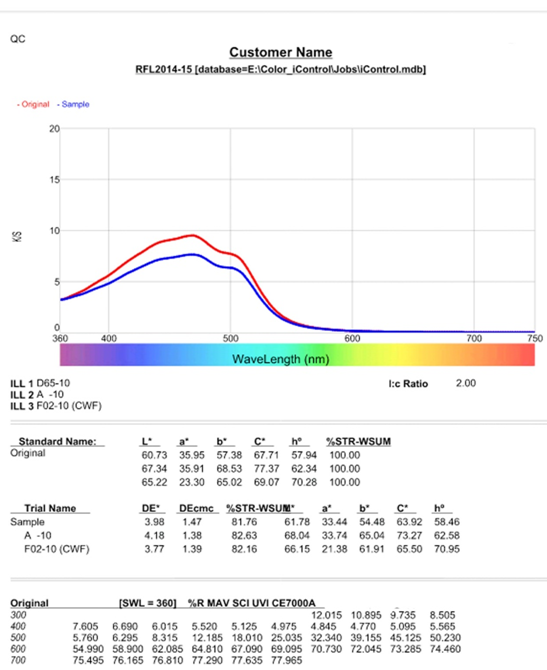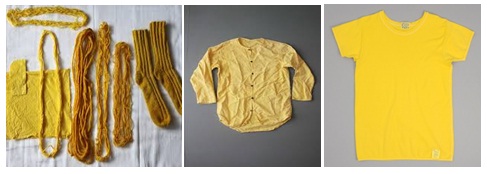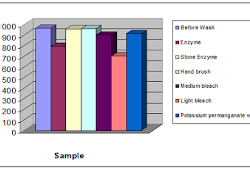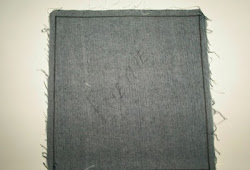Now You Know Natural Dyeing of Cotton Fabric Using Terminalia Chebula and Turmeric Part-5
Monday, 21 January 2019
Edit
NATURAL DYEING OF COTTON FABRIC USING TERMINALIA CHEBULA (KADUKKAI) AND TURMERIC (CURCUMA LONGA) PART-5
Rajan.S1
Textile Chemistry, SSM College of Engineering,
Komarapalayam, Namakkal, India.
srajusri321@gmail.com1
Gopinath.M2
Textile Chemistry, SSM College of Engineering,
Komarapalayam, Namakkal, India.
gopi.tc007@gmail.com2
Textile Chemistry, SSM College of Engineering,
Komarapalayam, Namakkal, India.
srajusri321@gmail.com1
Gopinath.M2
Textile Chemistry, SSM College of Engineering,
Komarapalayam, Namakkal, India.
gopi.tc007@gmail.com2
Previous Part
COLOR FASTNESS PROPERTIES OF NATURAL DYES
Colour fastness is the resistance of a material to change in any of its colour characteristics or extent of transfer of its colorants to adjacent white materials in touch or both for different environmental and use conditions or treatments like washing, dry cleaning etc. or exposure to different agency heat, light etc. Fading means changes in the colour with or without loss of depth of shade for exposure to particular environment/agency/treatments either by lightening or darkening of the shades. Bleeding is the transfer of colour to a secondary material in contact accompanying white fibre material of similar/dissimilar nature. The colour fastness is usually rated either by loss of depth of colour/ colour change in original sample or it is often expressed by staining scale meaning that the accompanying material gets tinted/stained by the colour of the original fabric, when the accompanying white fabrics of similar/dissimilar nature are either in touch/ made to touch by some means of test procedure/protocol. WASH-FASTNESS
The dyed samples were washed in the Launder o meter Laboratory apparatus according to EN ISO 105-C06 standard. The size of the sample was 100 x 40mm, the wash bath contained 4 g/l ECE phosphatereference detergent B, the volume of the bath was150 ml, the temperature of the bath was 40°C and time of washing 45 minutes. Ten stainless steel globules were added into each bath to perform washing, which corresponds to five domestic washings. After washing, the samples were rinsed twice in deionised water and air dried at room temperature.
RUBBING FASTNESS
The dyed samples were Rub fastness in Taber Crock meter - Model 418 found Laboratory apparatus according to EN ISO 105-C06 standard. The size of the sample was 100 x 20mm,arm is weighted to provide a constant 9Nload on the sample at all times and a mechanical counter keeps track of completed 10 cycles.After completion of the Rubbing fastness samples are dried. Then it is Compared AATCC Gray Scale for Staining of color.
COLOUR MEASUREMENTS
Related:


 |
| Fig.07 COLOUR MEASUREMENTS |

 |
| Fig. 08 FTIR Data Analysis |
The above FTIR spectra clearly show Terminalia chebula (Kadukkai) that they have the functional compounds. Among all the compounds are found to have good dye fixing/ bonding properties, sowhich has variety of biological activities, the Terminalia chebula extract contains highest amount of compounds thus influencing the effect of and antibacterial activity.
HERBALPRODUCTS
To utilize the eco-friendly Dyeing using renewable sources such as KADUKKAI and TURMERIC to produce herbal medicated textile material which is free from chemicals like Shirts, T Shirts, Shocks, and Kids Garments.
CONCLUSION
Based upon the result of colour fastness on wet rubbing and dry rubbing, light fastness and wash fastness, this dye can be applied for home furnishing and kids garments, fabrics such as screen cloth, bed covers, pillow covers and curtains. Based upon the tone produced, this dye stuff can be used for dying spiritualist fabrics. The process is eco-friendly and not harmful and it obeys ISO 14000 certification. The Method of producing and handing is easy. The cost of the dye is cheaper. The natural source for the dye is easy to cultivate the recommended to apply this dye stuff and procedures followed in
REFERENCES
HERBALPRODUCTS
To utilize the eco-friendly Dyeing using renewable sources such as KADUKKAI and TURMERIC to produce herbal medicated textile material which is free from chemicals like Shirts, T Shirts, Shocks, and Kids Garments.
 |
| Fig .09 Dyed Samples, Kurtha, T-Shirt |
 |
| Fig .10 Bed Cover, Pillow Cover |
Based upon the result of colour fastness on wet rubbing and dry rubbing, light fastness and wash fastness, this dye can be applied for home furnishing and kids garments, fabrics such as screen cloth, bed covers, pillow covers and curtains. Based upon the tone produced, this dye stuff can be used for dying spiritualist fabrics. The process is eco-friendly and not harmful and it obeys ISO 14000 certification. The Method of producing and handing is easy. The cost of the dye is cheaper. The natural source for the dye is easy to cultivate the recommended to apply this dye stuff and procedures followed in
REFERENCES
- H. P. T. Ammon and M. A. Wahl, “Pharmacology of Curcumalonga,” Planta Medica, vol. 57, no. 1, pp. 1–7, 1991.
- P. K. Lai and J. Roy, “Antimicrobial and chemo preventive properties
- Of herbs and spices,” Current Medicinal Chemistry, vol. 11,no. 11, pp. 1451–1460, 2004.
- R. K. Maheshwari, A. K. Singh, J. Gaddipati, and R. C. Srimal, “Multiple biological activities of curcumin: a short review,” Life Sciences, vol. 78, no. 18, pp. 2081–2087, 2006.
- H. Hayakawa,Y.Minanyia, K. Ito, Y. Yamamoto, andT. Fukuda, “Difference of curcumin content in Curcuma longa L., (Zingiberaceae) caused by Hybridization with other Curcuma species,” American Journal of Plant Sciences, vol. 2, no. 2, pp. 111–119, 2011.
- P. Anand, H. B. Nair, B. Sung et al., “Design of curcumin-loaded PLGA nanoparticles formulation with enhanced cellular uptake, and increased bioactivity in vitro and superior bioavailability in vivo,” Biochemical Pharmacology, vol. 79, no. 3, pp. 330–338, 2010.
- Iyer.k (1953), Introduction to Ayurveda, Sri Hari Publications, Mumbai, Pp 196 – 2011. M.Hart (1956), Herb and Beauty, ENCO publication, USE, Pp 188 -221
Sumber http://textilelearner.blogspot.com







